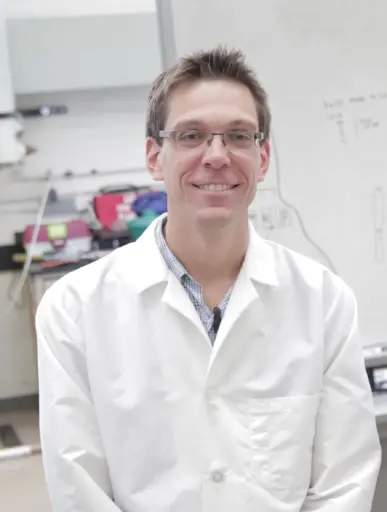A project to create energy-harvesting materials from plant-based sources could pave the way to devices that obtain their electronic juice from molecules found in fruits, vegetables, and trees.
Materials that transform mechanical pressure into electricity are called piezoelectric, and they have a wide range of useful functions, from sonar to the ignition sources for lighters.
Alternative energy is among the many promising uses for piezoelectric materials. Because the materials convert applied force into electric energy, they can generate power from almost any natural motion—like waves on the beach or footsteps on a floor.
 Michael Arnold
Michael Arnold
“I’m excited about energy harvesting. It would have a huge societal impact to have a nontoxic, inexpensive, renewable energy source,” says Michael Arnold, a professor of materials science and engineering at the University of Wisconsin-Madison who is leading the research.
Most piezoelectric materials are made with toxic chemicals like fluorine or lead, but plants naturally contain a compound called cellulose, which also has piezoelectric properties. Cellulose is a key structural component of plant cell walls that can be extracted as tiny crystals called nanocellulose, and those building blocks generate voltage when squeezed.
Taking advantage of cellulose’s piezoelectric properties, however, is somewhat trickier than simply stomping on a 2×4 piece of lumber.
“When you assemble all those nanocellulose building blocks into a material, that material is not immediately piezoelectric,” says Arnold.
Nanocellulose is notoriously difficult to work with because the small, sticky crystals tend to jumble together. And even though individual pieces of nanocellulose are piezoelectric on their own, the electronic effects cancel each other out in bulk, when the small rectangular crystals are disorganized and pointing in different directions. Akin to a magnet, each crystal has a positive and negative pole; for a material made from nanocellulose to become piezoelectric, all the poles must align.
Arnold and colleagues Padma Gopalan, Izabela Szlufarska and Xudong Wang have devised a strategy to do just that, modifying the nanocellulose crystals and using electric fields to arrange them perfectly.
Overcoming that challenge could help make UW-Madison an important hub for nanocellulose research. Already, other UW-Madison faculty, staff and students are working to incorporate nanocellulose into computer chips or break it down into bio-based chemicals and fuels.
The Arnold team’s research also could lead to more cost-effective, environmentally friendly sensor components, such as ultrasonic transducers for medical imaging or accelerometers.
“We could take one of nature’s most abundant resources, use it to make energy-generating materials, and then when you’re done with them, you could put them in the compost,” he says.